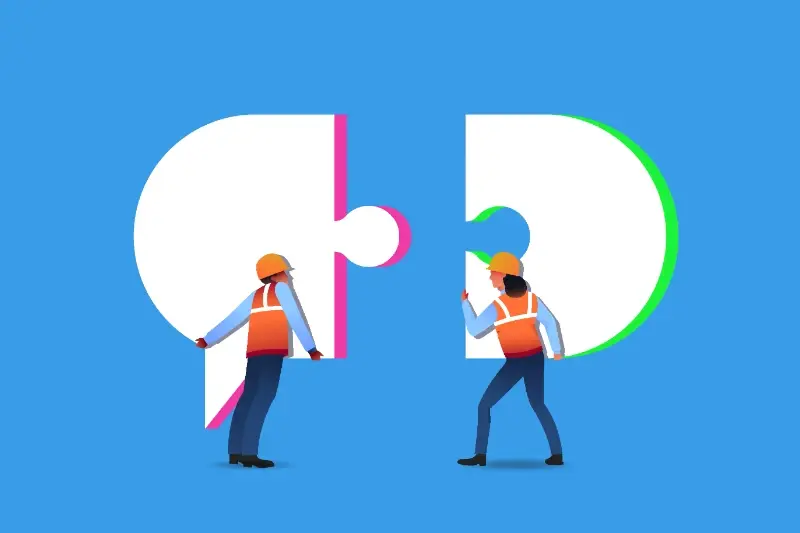The Hidden Costs Of Mobile App Ownership Maintenance And Updates
When you first dream up your mobile app idea, it's easy to focus solely on the initial development costs. After all, that's the biggest hurdle to getting your app into users' hands, right? Well, not quite. Just like owning a car involves more than the purchase price, the true cost of mobile app ownership extends far beyond the initial development phase.
A mobile app is not a 'build it and forget it' investment - it's a living digital product that requires constant care and attention to thrive in an ever-evolving technological landscape.
As a team that has guided countless clients through their app development journey, we've noticed that maintenance costs often catch app owners by surprise. Think of your app as a garden - it needs regular tending, pruning, and care to flourish. Without proper maintenance, even the most beautifully designed app can wither away in today's fast-paced digital ecosystem.
Understanding the total cost of ownership (TCO) of your mobile app is crucial for long-term success. From regular security updates to server costs, from technical debt management to user support - these ongoing app maintenance costs can actually exceed your initial development investment over time.
In this comprehensive guide, we'll pull back the curtain on the hidden costs of mobile app ownership. We'll explore what it really takes to keep your app running smoothly, secure, and relevant in an ever-changing mobile landscape. Whether you're planning your first app or already managing one, this honest look at maintenance costs will help you build a more realistic budget and set your app up for lasting success.
Why Apps Need Regular Updates
Remember that feeling when your favourite mobile app suddenly starts acting up or looks dated compared to newer apps? It's frustrating, isn't it? Just like a car needs regular servicing to keep running smoothly, mobile apps require consistent updates to stay relevant, secure, and user-friendly.
The Evolution of Technology and User Expectations
Think of your mobile app as a living, breathing entity in an ever-changing digital ecosystem. Operating systems like iOS and Android are constantly evolving, introducing new features and capabilities. Without regular updates, your app risks becoming incompatible with these changes, potentially leading to crashes or poor performance. It's similar to trying to use an old DVD player with a modern smart TV – sometimes, things just don't work as they should.
Keeping Users Happy and Engaged
Users today expect apps to be not just functional, but delightful to use. They want fresh features, smoother experiences, and interfaces that keep up with current design trends. When popular apps like WhatsApp or Instagram introduce new features, users begin to expect similar innovations across all their apps. Regular updates help meet these expectations while showing users that you're actively maintaining and improving their experience.
Beyond user satisfaction, updates play a crucial role in fixing bugs that inevitably crop up, patching security vulnerabilities, and optimising performance. Think of it as digital housekeeping – regular maintenance prevents small issues from becoming major problems. For example, a simple bug that causes occasional crashes might seem minor at first, but left unaddressed, it could lead to negative reviews and users abandoning your app altogether.
The True Cost of App Development vs Maintenance
When planning a new mobile app, most people focus heavily on the initial development costs. It's a bit like buying a car - the purchase price is just the beginning of your journey. What many don't realise is that the long-term maintenance costs can actually exceed the initial investment.
Breaking Down the Numbers
Think of your mobile app TCO (Total Cost of Ownership) as an iceberg. The initial development cost is the visible tip, while app maintenance costs represent the larger mass hiding beneath the surface. Industry experience shows that maintaining an app typically costs between 15% to 20% of the original development cost annually.
| Development Phase | Typical Cost Distribution |
|---|---|
| Initial Development | 100% (Base Cost) |
| Annual Maintenance | 15-20% of Base Cost |
| Major Updates | 25-30% of Base Cost |
Just as a house needs regular care to maintain its value, your app requires consistent attention to stay relevant and functional. This includes everything from routine updates and bug fixes to implementing new features and keeping up with platform changes.
Consider setting aside at least 20% of your initial development budget annually for maintenance costs. This helps prevent unexpected financial strain and ensures your app stays healthy in the long run.
Understanding these ongoing costs early in your planning process helps create more realistic budgets and prevents unpleasant surprises down the road. It's not about spending more - it's about spending wisely and planning for the future of your digital investment.
Keeping Your App Secure and Protected
Security isn't just a fancy buzzword - it's as essential to your app as a good lock is to your front door. Think of your app as a digital home where users store their personal information, make payments, and share sensitive data. Just as you wouldn't leave your house unlocked, leaving your app vulnerable to security threats isn't an option.
The Ever-Evolving Security Landscape
Like a game of digital cat and mouse, cybersecurity threats are constantly evolving. Hackers develop new techniques daily, making it crucial to stay one step ahead. We've seen countless cases where even major companies faced serious breaches simply because they didn't update their security measures regularly.
Regular security maintenance typically involves updating encryption protocols, patching vulnerabilities, and implementing new security features. It's similar to how banks continuously upgrade their security systems - it's an ongoing process, not a one-time solution.
The Real Cost of Security Neglect
Whilst security updates might seem like an unnecessary expense, the cost of a security breach can be astronomical. Beyond the immediate financial impact, you risk losing something far more valuable - your users' trust. Remember the saying, "Trust takes years to build, seconds to break"? That's particularly true in the app world.
Regular security maintenance typically costs between 5-15% of your initial development budget annually. While this might seem significant, consider it an insurance policy for your app's future. After all, rebuilding after a security breach isn't just expensive - it can be devastating to your app's reputation and user base.
Technical Debt and Legacy Code
Picture trying to build a house on a wobbly foundation. That's exactly what technical debt feels like in the world of mobile apps. It's those quick fixes and temporary solutions we sometimes need to implement to meet deadlines or solve immediate problems – but they often come back to haunt us later.
Understanding Technical Debt
Just like financial debt, technical debt accumulates interest over time. When developers take shortcuts or use outdated methods, it creates a snowball effect that makes future updates more complicated and expensive. Think of it as putting off doing the washing up – the longer you wait, the bigger the pile becomes, and the more daunting the task feels.
The true cost of technical debt isn't in the quick fixes you make today, but in the hours spent untangling them tomorrow
The Legacy Code Challenge
Legacy code is like that drawer in your kitchen filled with bits and bobs that you're afraid to sort through. It's old code that still works but doesn't align with modern development practices. As your app grows older, maintaining this legacy code becomes a significant portion of your app maintenance costs.
We've seen cases where companies spend up to 40% of their development budget just managing technical debt and legacy code issues. The good news? You can minimise these costs by investing in clean code practices from the start and regularly reviewing your codebase for opportunities to modernise.
To keep your mobile app TCO under control, consider setting aside dedicated time each quarter for code refactoring and technical debt management. It's like regular spring cleaning – a bit of effort now saves a lot of hassle later.
Server and Infrastructure Costs
Remember when you'd buy a video game, pop it into your console, and that was that? Mobile apps are quite different beasts. Behind every smooth-running app sits a complex infrastructure of servers and systems, quietly working away to keep everything running seamlessly.
Think of your app's infrastructure as a digital office building. Just as you'd pay rent, electricity, and maintenance for a physical space, your app needs ongoing investment in its digital home. These costs can catch many app owners off guard, especially when their app becomes more popular than expected (which sounds like a good problem to have, until your server bills arrive!).
Common Infrastructure Expenses
- Cloud hosting services (AWS, Google Cloud, Azure)
- Database management and storage
- Content delivery networks (CDNs)
- Push notification services
- Data backup and recovery systems
- SSL certificates and security measures
The tricky part is that these costs often scale with your success. As your user base grows, so do your infrastructure needs. It's a bit like throwing a party - the more guests you have, the more refreshments you'll need to keep everyone happy!
The good news is that modern cloud services offer flexible pricing models, allowing you to pay for what you use. However, it's crucial to plan for these costs from the start. We've seen many promising apps struggle because their business model didn't account for increasing infrastructure costs as they scaled.
Remember: a well-planned infrastructure budget isn't just about keeping the lights on - it's about ensuring your app can grow sustainably without nasty financial surprises along the way.
Staying Compatible with New Devices
Remember when you got your first smartphone? The technology landscape has changed dramatically since then, and keeping your app running smoothly across all devices is like trying to hit a moving target. It's one of the most challenging aspects of app maintenance costs that often catches business owners by surprise.
The Device Compatibility Challenge
Every time Apple or Samsung releases a new flagship phone, or when Android and iOS push major updates, your app needs to adapt. It's not just about making sure your app works - it needs to look gorgeous and perform flawlessly on everything from the latest iPad Pro to that three-year-old Android phone your aunt refuses to upgrade.
Think of it like maintaining a car. Just as cars need regular servicing to run properly on different road conditions, your app requires updates to function perfectly across various devices and screen sizes. This ongoing compatibility work is a significant factor in your mobile app TCO (Total Cost of Ownership).
- Screen size and resolution testing
- Operating system compatibility checks
- Hardware feature adaptation (cameras, sensors, etc.)
- Performance optimisation for different processors
- Battery usage monitoring
The good news? When handled properly, device compatibility updates can actually improve your app's performance and user experience across the board. Many of our clients find that regular compatibility work helps them stay ahead of the curve and maintain happy users.
Always test your app on both the newest and oldest supported devices in your target market. This ensures you're not leaving any users behind while staying current with technology.
User Support and Bug Fixes
Let's face it - even the most meticulously crafted apps aren't immune to the occasional hiccup. As any app owner knows, the moment users encounter an issue, they expect swift solutions and responsive support. It's rather like running a shop - you wouldn't dream of leaving your customers stranded when they need help, would you?
The Reality of User Support
Supporting your app users isn't just about fixing technical glitches - it's about maintaining relationships and trust. Whether it's responding to emails, managing app store reviews, or providing in-app support, these activities require dedicated time and resources. Think of it as having a virtual customer service team working round the clock.
Bug fixes, meanwhile, are an inevitable part of app ownership. No matter how thoroughly you test your app, real-world usage often reveals unexpected issues. These might range from minor visual glitches to more serious functional problems that need immediate attention.
- First-line support costs (email, chat, or phone support)
- Bug tracking and reporting systems
- Developer time for investigating and fixing issues
- Quality assurance testing for bug fixes
- Emergency support for critical issues
The good news? Many issues can be prevented through proper testing and maintenance routines. We've seen cases where investing in comprehensive testing reduced support queries by up to 60%. However, it's essential to budget for ongoing support and maintenance - much like you'd factor in regular servicing costs when buying a car.
Remember, happy users become loyal advocates for your app. Investing in proper support infrastructure isn't just an expense - it's an investment in your app's long-term success and reputation.
App Store Requirements and Guidelines
Just when you think you've got your app maintenance sorted, along come platform guidelines to shake things up! Both Apple's App Store and Google Play regularly update their requirements, and keeping up with these changes is a crucial part of your app's total cost of ownership (TCO).
Platform compliance isn't a one-time achievement - it's an ongoing commitment that ensures your app remains available to users while maintaining their trust
Platform Policy Changes
Remember when Apple suddenly required all apps to include privacy nutrition labels? That sent many app owners scrambling to update their submissions! These kinds of policy changes happen more often than you might think, and they're not just bureaucratic box-ticking exercises - they're essential for keeping users safe and maintaining trust in the app ecosystem.
Staying Compliant and Current
Each major platform update (think iOS or Android version releases) typically brings new requirements that your app must meet. Sometimes these changes are minor, like updating certain API implementations. Other times, they're more substantial, such as implementing new privacy features or updating your user interface to match platform guidelines.
The cost implications of these updates vary widely. Simple compliance updates might take just a few days of development time, while major platform requirement changes could require several weeks of work. It's worth noting that failing to meet these requirements isn't really an option - your app could be removed from the store, effectively ending your relationship with existing users.
To manage app maintenance costs effectively, we recommend setting aside a portion of your budget specifically for platform compliance updates. Think of it as an insurance policy for your app's continued presence in the stores.
Building Maintenance into Your Budget
Let's face it - nobody likes unexpected costs popping up, especially when you've already invested significantly in your app. We've seen many business owners caught off guard by maintenance expenses, and we understand how frustrating that can be.
The good news is that proper budgeting for app maintenance doesn't need to be complicated. Think of it like owning a car - you know you'll need regular servicing, occasional repairs, and maybe even some upgrades to keep it running smoothly.
Recommended Budget Allocation
- 20% of initial development cost per year for basic maintenance
- 35% if you're planning regular feature updates
- 15% emergency fund for critical fixes
- 10% for server and infrastructure costs
- 5% for app store fees and compliance
A helpful approach is to set aside these funds monthly rather than scrambling when issues arise. If your app cost £50,000 to develop, you should budget around £833 monthly for basic maintenance (based on the 20% annual rule).
Remember that maintenance costs often fluctuate. You might spend less in some months and more in others, particularly when major operating system updates roll out. Just as you wouldn't skip your car's MOT to save money, skimping on app maintenance can lead to bigger problems down the road.
Consider building a 'maintenance roadmap' that aligns with your business goals. This helps spread costs more evenly throughout the year and ensures your app stays fresh and functional. Many of our clients find that treating maintenance as an investment rather than an expense helps them make more informed decisions about their app's future.
Conclusion
As we've explored throughout this article, the true cost of mobile app ownership extends far beyond the initial development phase. Much like owning a car or a house, your app requires consistent care, attention, and yes - ongoing investment to maintain its value and effectiveness.
Understanding these hidden costs isn't meant to discourage you from pursuing your app project. Rather, it's about helping you make informed decisions and plan effectively for the future. When you factor in app maintenance costs from the beginning, you're actually protecting your initial investment and setting yourself up for long-term success.
Think of your app's total cost of ownership (TCO) as an investment in your users' happiness and your business's growth. Every update you make, every security patch you implement, and every performance improvement you achieve helps keep your users engaged and your app relevant in an ever-evolving digital landscape.
Remember, successful apps aren't just built - they're nurtured. By building a realistic maintenance budget, staying on top of technical updates, and responding to user feedback, you're not just maintaining an app; you're growing a digital product that continues to deliver value to your users and your business.
The mobile app journey is a marathon, not a sprint. With proper planning and a clear understanding of the ongoing costs involved, you can create and maintain an app that stands the test of time, delights your users, and achieves your business objectives. After all, the most successful apps aren't always the ones with the biggest development budgets - they're the ones that are consistently maintained, updated, and improved over time.
Share this
Subscribe To Our Blog
You May Also Like
These Related Stories

The Hidden Benefits Of Devops That Most App Owners Never Consider

The Hidden Costs of Adding AI to Your Mobile App





